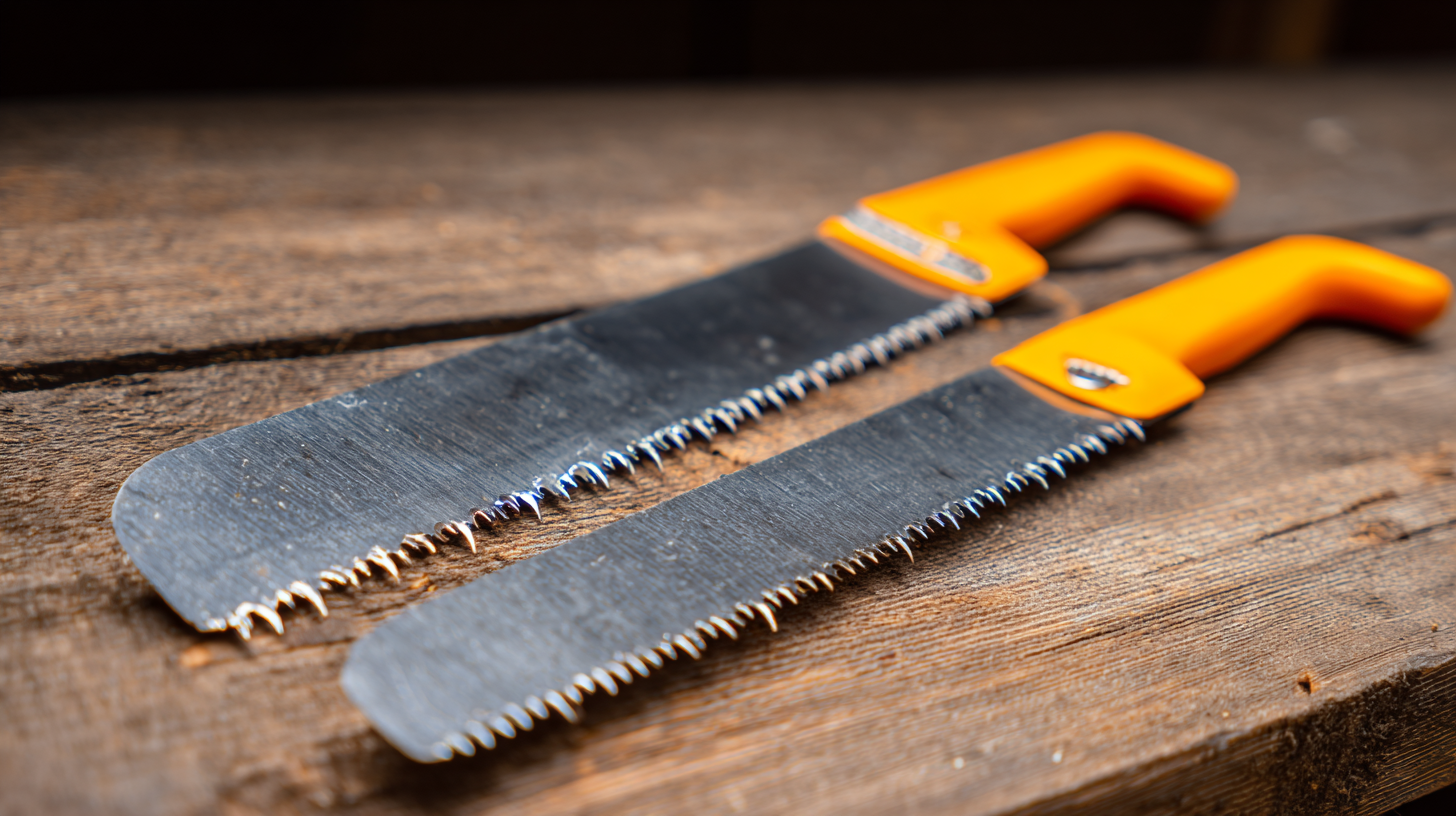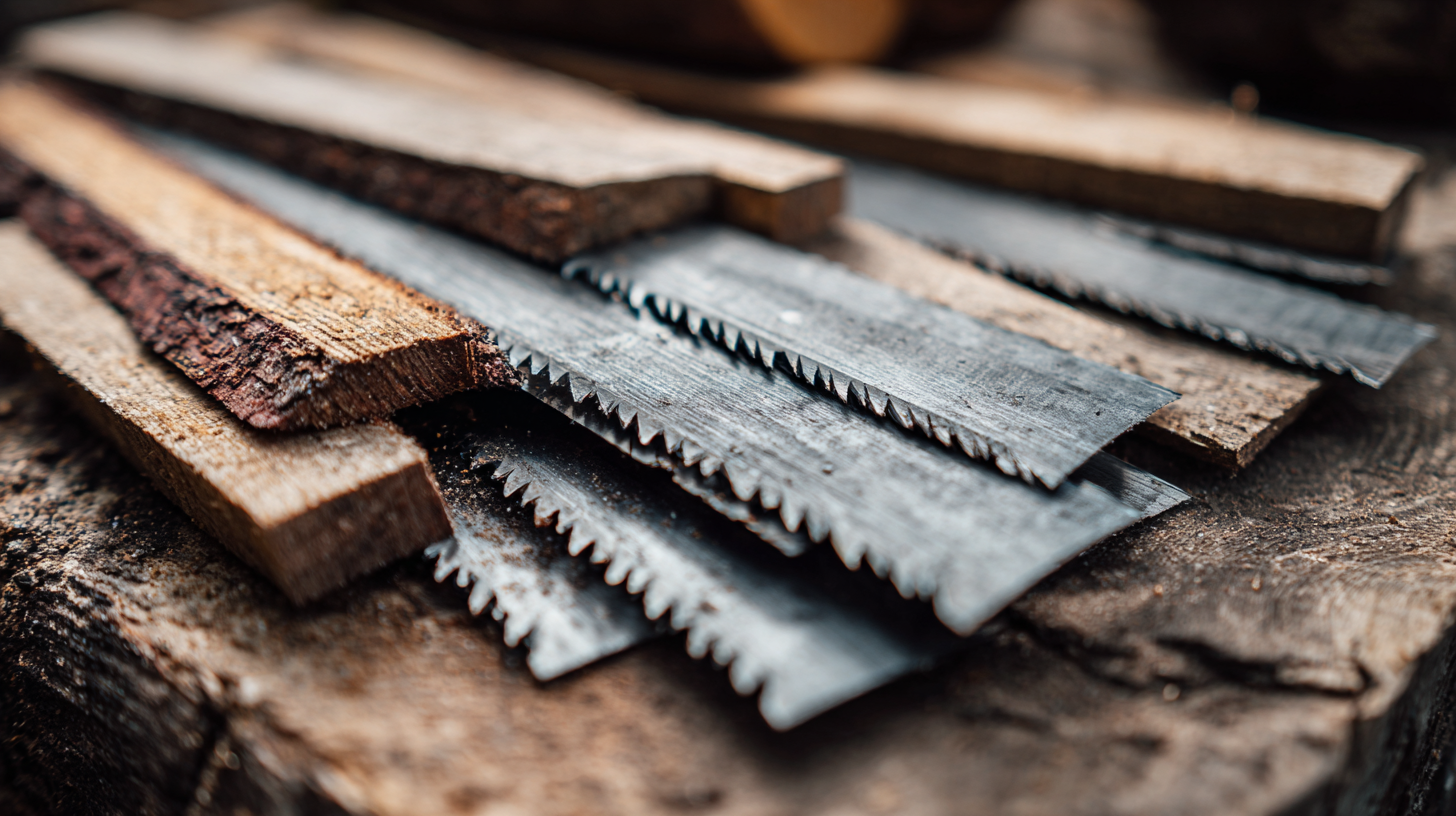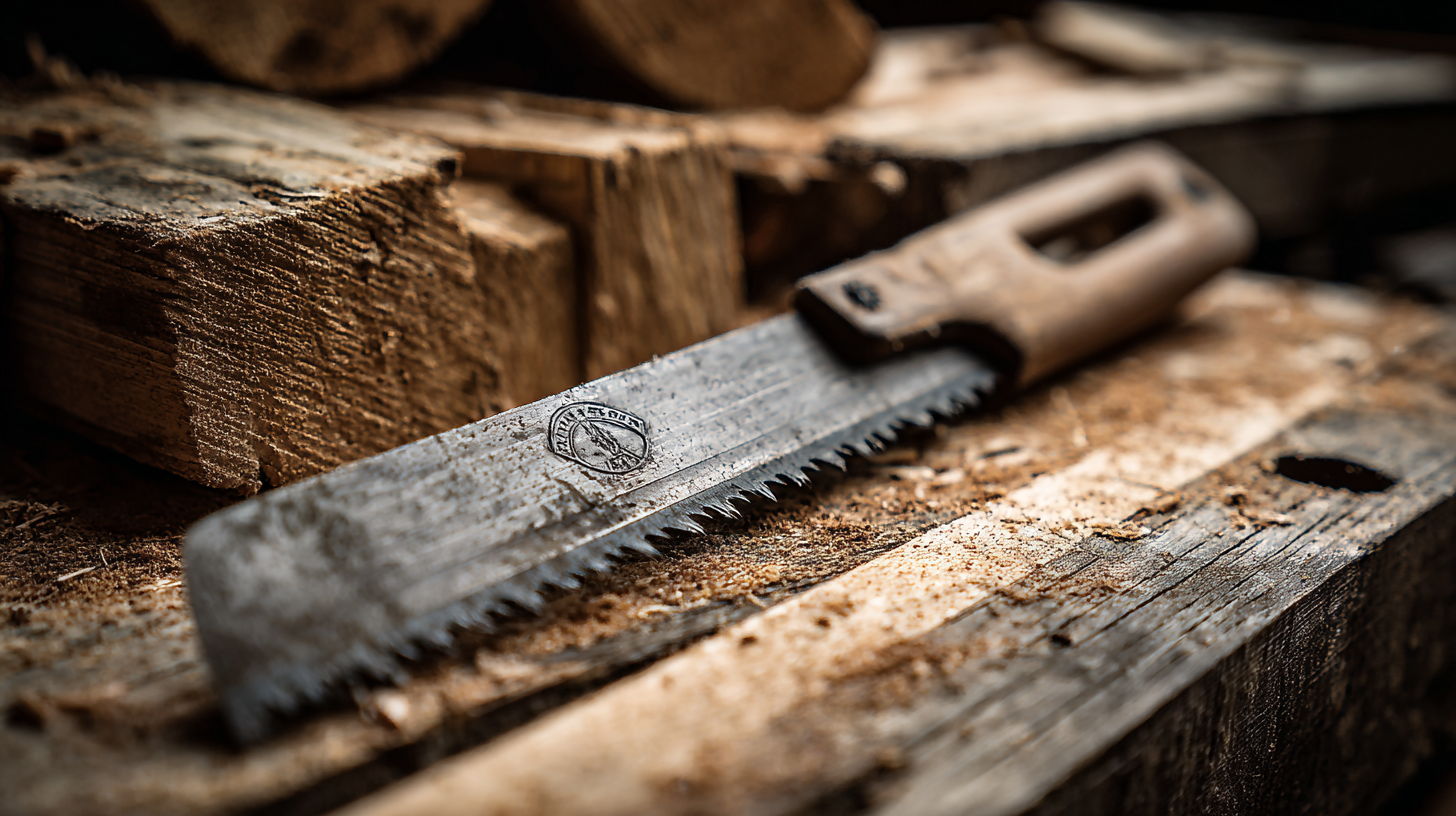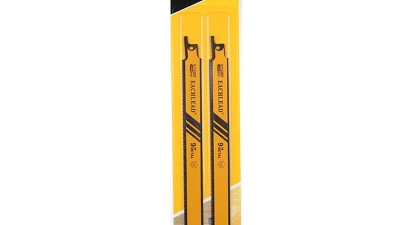Ultimate Checklist for Choosing the Right Toolstation Reciprocating Saw Blades for Every Job
Table of Contents
- Understanding Different Types of Reciprocating Saw Blades Available
- Key Factors to Consider When Choosing Reciprocating Saw Blades
- Comparative Analysis of Bi-Metal, Carbide, and High-Speed Steel Blades
- Optimal Blade Lengths for Various Cutting Tasks and Materials
- Tips for Maintaining and Storing Your Reciprocating Saw Blades Properly
- Maximize Your Cutting Efficiency: A Deeper Look at S1122BF 9 Inch Reciprocating Saw Blades
- FAQS
- Conclusion
- Related Posts
When you're tackling different cutting tasks, having the right Toolstation Reciprocating Saw Blades makes all the difference in getting quality results. Whether you’re a seasoned pro or just diving into DIY projects, picking the right blades can seriously boost your efficiency and the overall quality of your work. Here at Wenzhou Yichuan Tools Co., Ltd., we get that everyone’s needs are a bit different, which is why we’ve been focusing on making top-notch electric tool accessories since 2003. Our experience in crafting high-quality jigsaw blades, reciprocating saw blades, and planers means you’ll always find the perfect tool for whatever you’re working on—helping you cut with precision and ease. In this handy checklist, I’ll walk you through the key things to think about when choosing the right Toolstation Reciprocating Saw Blades, so you can make smarter decisions and get your projects done right.

Understanding Different Types of Reciprocating Saw Blades Available
When it comes to picking the right reciprocating saw blades, understanding the different types out there can really make a difference in how smoothly your cutting goes. At Wenzhou Yichuan Tools Co., Ltd., they've got a pretty extensive selection of high-quality blades designed for all sorts of materials and jobs. Whether you're cutting wood, metal, or those stubborn plastics, choosing the right blade is key—trust me, it’s what makes your cuts cleaner and your work easier.
**Tip 1:** Keep an eye on the TPI, which is just a fancy way of saying teeth per inch. If you’re working with thicker stuff like heavy wood, go for something in the 6 to 8 range. But if you're trying to cut metal or need those finer, more precise cuts, bump it up to around 10 to 14 TPI. Picking the right TPI means your blade does its job without struggling, saving you time and frustration.
**Tip 2:** Don’t forget about the blade material. Bi-metal blades are pretty versatile, tough, and handle a bunch of different tasks, while carbide-tipped blades are better for the really tough jobs. Using the right material helps your blades last longer and perform better, so you’re getting more bang for your buck—and safer, too.
Getting a good grip on these basics, whether you’re a pro or just tackling your DIY project, means you’ll pick the right saw blades and get the best results. It’s all about working smarter, not harder.
Key Factors to Consider When Choosing Reciprocating Saw Blades
When you're picking out reciprocating saw blades for different jobs, it's pretty important to understand the key factors to get the best cutting performance. One of the first things to think about is the material of the blades. There are various options, like high-carbon steel, bi-metal, and carbide-tipped blades, and each has its own perks depending on what you're working on. For example, bi-metal blades are super durable and great for cutting tougher materials, so they're usually the go-to for heavy-duty stuff. On the other hand, high-carbon steel blades are more budget-friendly and work just fine for lighter, less demanding tasks—perfect if you only need it now and then.
Another thing to look at is the tooth configuration and how many teeth per inch (TPI) the blade has. Honestly, this can make a big difference in how your cut turns out. Blades with fewer teeth are usually better for chopping through wood and softer materials—they bite more and get the job done quickly. Meanwhile, blades with more TPI are made for more delicate, precise cuts—think metal or other hard stuff—so you end up with a cleaner finish. Also, don't forget to consider the thickness of what you're cutting; that helps you pick the right blade size and shape, making everything work smoother. Keep all these things in mind, and you'll be way more confident in picking the perfect blade for whatever project you've got going on.

Comparative Analysis of Bi-Metal, Carbide, and High-Speed Steel Blades
When you're trying to pick the right reciprocating saw blade for different jobs, it’s pretty important to understand what sets bi-metal, carbide, and high-speed steel blades apart. For most folks, bi-metal blades are favorites—probably because they’re super versatile and last a good long while. They’re made with high-speed steel teeth welded onto a flexible backing, which makes them perfect for cutting a bunch of materials, like wood, metals, and pretty much everything in between. Plus, they resist wear and can take some shocks, so they’re a reliable choice whether you’re a pro or just tackling a DIY project.
Now, if you’re working with tougher stuff like tile or masonry, carbide-tipped blades are where it’s at. The tips are made from a super durable material that handles abrasive materials way better, giving you cleaner cuts and a longer lifespan—though they do tend to cost more. But honestly, for those specialized jobs, they’re totally worth the splurge. Then there are high-speed steel blades—they’re great for softer materials and usually come at a lower price point. However, they might not last as long as bi-metal or carbide blades when you're really pushing hard. Knowing these little differences can really help you pick the best blade for whatever you're working on—that way, you'll get the job done right without any unnecessary frustrations.
Performance Comparison of Reciprocating Saw Blades
Optimal Blade Lengths for Various Cutting Tasks and Materials
When you're picking out the right reciprocating saw blades, one of those key things you probably wanna pay attention to is the blade length—specifically, what works best for your particular cutting jobs and materials. Honestly, different tasks call for different blade lengths if you want things to go smoothly and efficiently. Like, shorter blades are usually perfect if you're trying to make precise cuts in tight spots—think little corners or detailed work. On the flip side, if you need to cut through thicker stuff like lumber or metal, longer blades will give you that extra reach and power to get the job done without messing around. Knowing which length works best can really boost your cutting game and actually save you some time too.
Oh, and don’t forget to think about what materials you’ll be working with. There are so many kinds of reciprocating saw blades out there, each tailored for specific tasks. For heavy-duty stuff—hardwood, really tough metals—a longer, tougher blade made from bi-metal or high-speed steel is usually the way to go. But if you’re just dealing with softer materials or lighter projects, a shorter blade should do the trick. Grasping these little details not only helps you pick the right blade but also makes it last longer and keeps things safe and sound while you’re working. Just keep blade length and material compatibility in mind, and you'll be all set to handle pretty much any cutting task that comes your way.
Ultimate Checklist for Choosing the Right Toolstation Reciprocating Saw Blades for Every Job
| Cutting Task | Material | Optimal Blade Length | Blade Type |
|---|---|---|---|
| Wood Cutting | Softwood | 6 inches | High Carbon Steel |
| Metal Cutting | Mild Steel | 8 inches | Bi-Metal |
| Plastic Cutting | PVC | 10 inches | High Carbon Steel |
| Demolition | Wood and Metal | 12 inches | Bi-Metal |
| Pipe Cutting | Copper Pipe | 6 inches | Carbide Tipped |
Tips for Maintaining and Storing Your Reciprocating Saw Blades Properly
Taking good care of your reciprocating saw blades—like cleaning and storing them properly—makes a huge difference in how long they last and how well they perform. Funny enough, a report from the Power Tool Institute says that up to 30% of issues with tools come from not maintaining the blades correctly. After each use, it's a good idea to give your blades a quick clean. Just mix some warm, soapy water and gently scrub with a soft brush to get rid of glue, sap, resin, or any stubborn debris from your cutting jobs. Also, keep an eye on your blades; if you notice dull teeth or bent bodies, it’s time to replace them before they cause more trouble or mess up your work.

Storage matters just as much. Keep your blades in a dry, climate-controlled spot to avoid rust and corrosion. The National Association of Home Builders recommends using a dedicated storage case or organizer—not only does this protect your blades, but it also makes finding the right one a lot easier when you’re in a rush. Plus, storing them separately and securely helps prevent accidental damage when you’re moving or stashing your tools away. Follow these simple tips, and you'll get the most bang for your buck—making your projects run smoother, with less hassle and more precision every time.
Maximize Your Cutting Efficiency: A Deeper Look at S1122BF 9 Inch Reciprocating Saw Blades
When it comes to maximizing cutting efficiency in metalworking, the S1122BF 9 Inch Reciprocating Saw Blades stand out as a premier choice. With an overall length of 9 inches (225x19x0.9mm) and an impressive rating of 14 teeth per inch, these blades are optimized for heavy-duty applications. Designed specifically for cutting thick sheet metal ranging from 3-8mm, as well as solid pipes and profiles between Φ10-175mm, they cater to the demands of both professionals and advanced DIY enthusiasts.
The bi-metal construction of the S1122BF ensures remarkable durability and performance. The reinforced pair-setting teeth are engineered for pro-quality high-performance straight cutting, which is crucial when working with tough materials. Recent industry reports indicate that the use of bi-metal blades can enhance cutting speed by up to 30% compared to standard steel blades, allowing for faster project completion without compromising precision. This efficiency is particularly beneficial in sectors like construction, automotive, and manufacturing, where time and accuracy directly impact productivity and costs.
Moreover, the design features of the S1122BF enable fast cutting, making it an ideal tool for professionals who demand reliability and effectiveness. With the right choice of reciprocating saw blades, metalworking processes become smoother, ultimately leading to increased output and optimized operational efficiency. Thus, investing in high-quality tools like the S1122BF is not just beneficial—it's essential for anyone looking to elevate their cutting game in the metal industry.
FAQS
: Bi-metal blades combine high-speed steel teeth with a flexible backing, making them versatile for various materials. Carbide-tipped blades excel in cutting hard materials like tile, offering longer life and cleaner cuts. High-speed steel blades are suitable for softer materials but may wear out faster.
Bi-metal blades are favored due to their durability, resistance to wear, and ability to handle shock loads, making them effective for a wide range of cutting tasks.
Yes, carbide-tipped blades provide longer life and more efficient cuts in abrasive materials, making them a worthwhile investment for specialized jobs.
High-speed steel blades are effective for cutting softer materials but do not perform as well in demanding applications compared to bi-metal and carbide blades.
Clean blades after each use with warm, soapy water and a soft brush. Regularly inspect them for wear, such as dull teeth or bent bodies, to prevent costly replacements.
Store blades in a dry, temperature-controlled environment to avoid rust and corrosion. Use a dedicated blade storage case to keep them organized and separated, reducing the risk of accidental damage.
Proper maintenance can prevent up to 30% of tool-related inefficiencies and extend the lifespan of the blades, ensuring optimal performance during cutting tasks.
Regular inspections for signs of wear, such as dull teeth or bent bodies, can help you identify when a blade may need to be replaced to maintain cutting precision.
Dedicated storage cases or organizers not only protect the blades but also make it easier to identify and access the right blade for future projects, enhancing efficiency.
Conclusion
When you're trying to pick the right Toolstation Reciprocating Saw Blades, it’s really important to get a good grasp of the different types out there. This post will walk you through the main kinds—like Bi-Metal, Carbide, and High-Speed Steel—and point out what makes each one special, along with the best jobs they’re suited for. I’ll also cover some key stuff you should keep in mind, like what materials the blades work best with and how long the blades should be, so you can make smarter choices based on what you’re cutting.
Plus, taking care of your blades—proper storage and maintenance—goes a long way in keeping them sharp and working great for ages, which is super important whether you’re a pro or just into DIY projects. Oh, and just so you know, at Wenzhou Yichuan Tools Co., Ltd., we’ve been making top-notch reciprocating saw blades since 2003. We really focus on making sure you get the right blade for every job you’ve got lined up.
Related Posts
-

Global Innovation in Reciprocating Saw Blades from China Proudly Reshaping the Market
-

Unlocking Efficiency with the Best Reciprocating Saw Blades Screwfix for Global Procurement Success
-

Understanding Repair Costs and After Sales Advantages of Best Reciprocating Saw Types Guide
-

Discover the Most Reliable Fine Hacksaw Blade Examples for Your Next Project
-

5 Essential Tips for Choosing the Best Bulk Reciprocating Saw Blades for Your Projects
-

Global Trust in Chinese Manufacturing Discover the Best Sawzall for Cutting Metal
Blog Tags:






